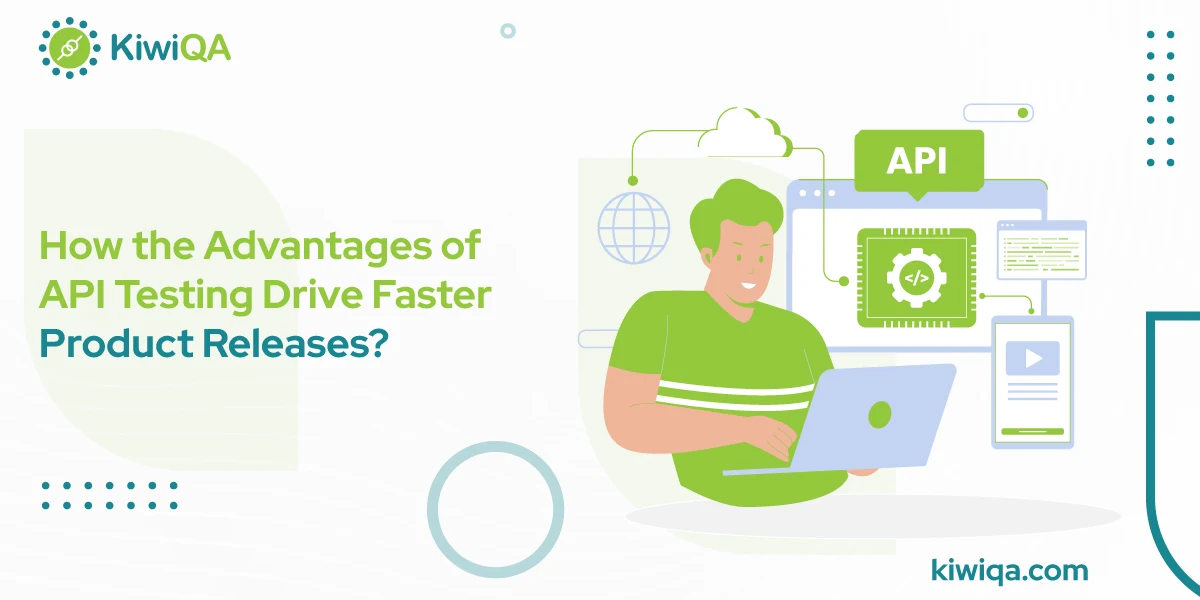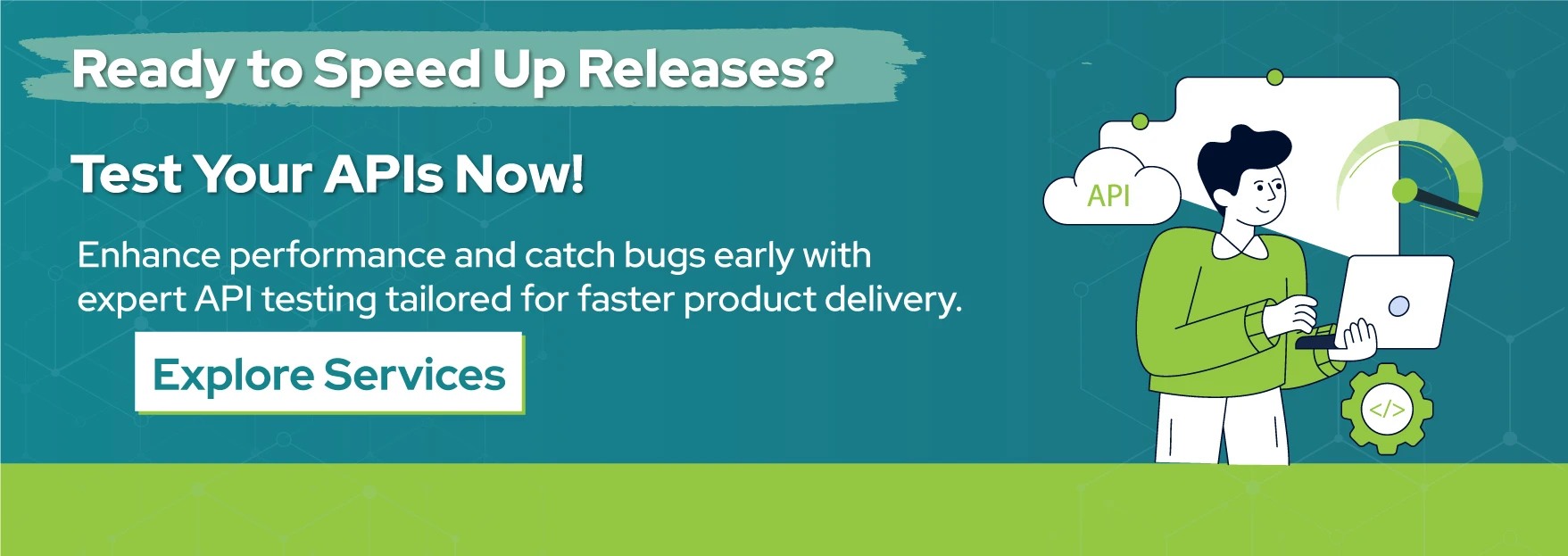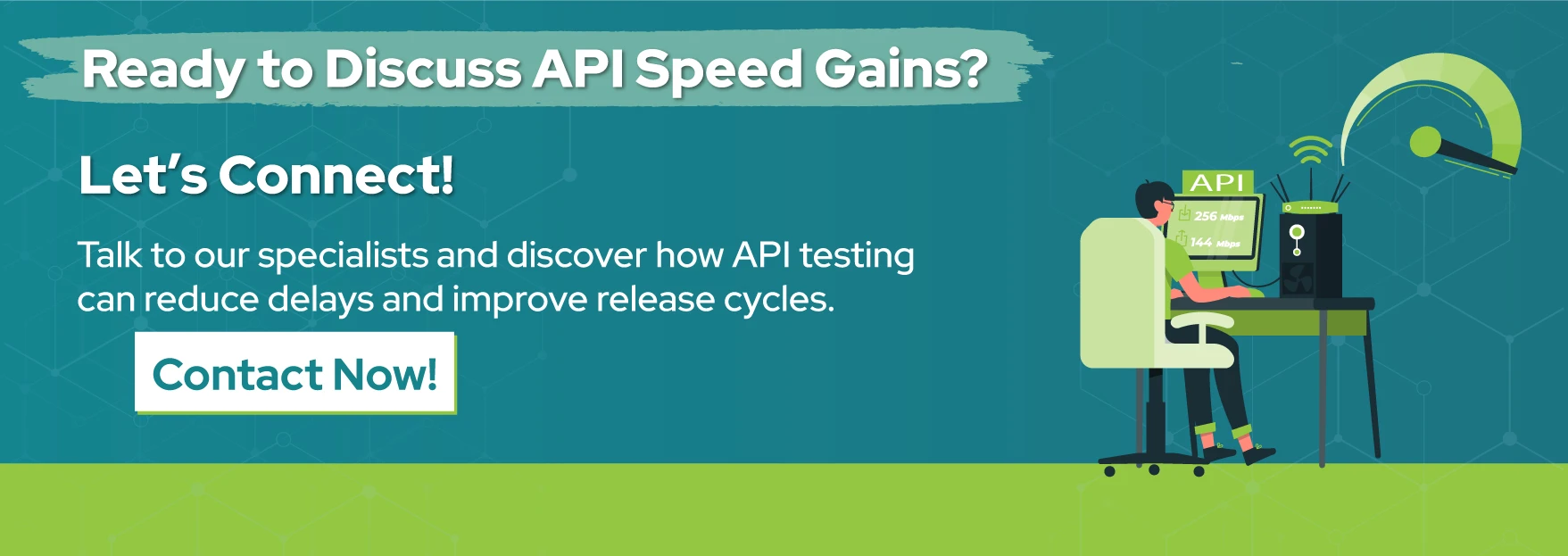In the current organizational landscape, people want to grab products in seconds. Faster product release in the market is necessary for any business to thrive & succeed. By decreasing the time-to-market, organizations can generate revenue, grab market share & adapt quick customer behavioral needs & market trends. Faster release to the market means grabbing a competitive edge and setting the market price for competitors.
Well, to accelerate the release cycle, companies must integrate API testing. API testing can drive the release cycle by allowing fast bug addressing, enabling quick feedback, improving software quality, etc. By testing API, developers can identify & resolve the issues before they reach the user interface. It can lead to a smooth user experience & fewer post-release bugs. Since the testing procedure is efficient & streamlined, more businesses are considering this over others. Based on the industrial reports, the API testing landscape in 2029 is expected to reach US$1452.4 million with an accelerating rate of 15.2%. To explore how API testing services help for faster release, read the blog.
Understanding API Testing
API testing is the procedure that verifies that the API is operating seamlessly. There are various API testing types, each playing various roles to verify the API’s security, functionality, and performance. Developers can also run API testing manually, but it takes time & effort. By using API testing tools, businesses can automate the testing process. There are companies that generate revenue through API as a product, as the organization model runs on APIs for multiple functionalities.
Most business & government organizations rely on secure APIs for day-to-day operations by integrating 3rd party services. The software environment is competitive & users are widely willing to tolerate unreliable applications. It plays a crucial role in SDLC since it validates the performance, security, & functionality of API. By early API testing, developers can address & repair errors prior to any damage to the final product.
Types of API Testing
➥ Functional Testing
Functional API testing verifies that the API functions perfectly based on the specification & performs as expected under multiple conditions. The testing involves sending requests to API & comparing outcomes with expected results. The testing type is necessary to ensure the API’s reliability, & flexibility, and performance.
➥ Performance Testing
API performance testing is necessary for measuring the performance of API under various loads. The testing team checks how the API works under normal, peak & stress loads. It proves the app can manage a specific level of traffic & manage stability. The following testing is necessary for verifying a streamlined user experience.
➥ Security Testing
API security testing aims to focus on monitoring errors & weaknesses in the security mechanism. It validates the API is safeguarded against security issues, data theft & third-party access. Multiple security testing types are employed, for example, penetration testing, vulnerability scanning, etc.
➥ Integration Testing
Integration testing for API validates the various parts of the system work collaboratively when interacting through APIs. The following type of testing focuses on the interfaces between components, verifying the data flows as expected & services respond accurately to one another. It verifies that the system seamlessly communicates & exchanges data efficiently.
Also Read : Performance Testing for Web Applications: Preparing for Peak Traffic in 2025
How API Testing Accelerates Product Releases?
API testing is an innovative trend taken by software development companies. Now, businesses are taking an API-first approach where the development teams design apps by collaborating on various APIs together. The following product-centric framework focuses on software functionality through APIs. Nowadays, businesses are competing to deliver better, error-free products faster than their competitors. Through continuous & effective API testing, it is possible for them. Taking the best approaches to the QA process can drive high-quality software in less time.
API testing holds a wider amount of benefits, contributing organizations significantly to successful web development projects. Here, we are highlighting factors that drive API testing for faster product release.
➥ Early Bug Detection
API testing plays a strong role in accelerating the product release by allowing early bug detection & limiting the overall costs. Through API testing, developers can monitor issues at the server level before they manifest in the user interface, leading to faster bug resolution & enhanced code quality. The proactive approach limits delays & verifies smoother, reliable product releases before the errors reach the user interface. Automated API testing causes less error because it is carried out more precisely and frequently, which boosts accuracy.
➥ Faster Test Execution
API testing drives development by enabling parallel testing along with code implementation. The APIs often operate independently of the user interface, so the team can verify the functionality earlier and decrease the errors throughout the QA phase. API testing supports agile methodologies & continuous integration/deployment approaches, verifying faster release & iterative improvements.
➥ Improved Test Coverage
API testing enhances test coverage and leads to reliable product releases. By driving API testing, you can uncover the errors that might be missed in UI testing. Automated API testing offers robust outcomes by driving efficiency, quicker feedback, speed detection of issues, and accelerated the development & release cycle.
➥ Enhanced Test Reusability
When a business uses API testing, it delivers enhanced test reusability across various parts of applications & integrations. It reduces the development time while driving the product release cycles. The modern API testing tools enable the reuse of the test suites to design their own CI/CD pipelines & integrate them into existing pipelines to streamline the development cycle. API testing is driven mostly by businesses for its features of early addressing & fixing issues. Since these are reusable, it’s less expensive than other testing methodologies.
Key Advantages of API Testing for Faster Releases
The modern business application mostly relies on internal & external API connections. The API performs major tasks like secure access, info exchange, and connection setup. The current dynamic landscape of SDLC APIs serves as the source of connectivity. It allows seamless communication between diverse applications.
Various types of APIs are available, so now developers have more options when designing an integration solution. Organizations quickly rely on the API platform to deliver interconnected systems and robust and efficient outcomes. Here in the below section, we have elaborated on the benefits of API testing in faster product releases in brief. Have a look-
➥ Reduced Testing Time
API testing comprehensively minimizes the testing time & drives the release cycles. By testing the API layer, developers can identify & resolve the issues earlier in the development process. It minimizes the rework & delays. The automated API testing enables faster execution & frequent release in a quicker time.
API testing is quicker than UI testing. API allows early identification of bugs without a complete user interface, saving resources & time. The automated tests offer smart feedback to developers, allowing them to address quick issues. Furthermore, it accelerates the development cycle & minimizes the time spent on debugging.
➥ High Scalability
When organizations scale & evolve, the API must accommodate user demand, increasing load without compromising the performance. API testing enables the team to stimulate heavy user traffic, test API under various load conditions & track potential errors or scalability issues. By proactively addressing the scalability concerns, forms can verify a seamless user experience & avoid service disruptions. The testing is considered scalable since it allows testing in multiple endpoints & scenarios.
➥ Automation Capabilities
API automation testing accelerates the SDLC by streamlining the testing procedure & diminishing the time to market. Automated testing can be quickly & frequently executed. It allows the team to address issues earlier in SDLC. With a quick feedback loop & continuous integration pipelines, firms can iterate & release updates quickly to stay ahead of competitors.
➥ Parallel Testing Support
The API testing delivers significant benefits such as faster execution, better test coverage, and cost savings. It offers parallel testing support by running tests thoroughly across various configurations. The team can minimize the testing time and enable a quick feedback loop with faster market release. API testing has the potential to run multiple API tests simultaneously. It allows comprehensive testing by covering multiple environments, configurations & devices.
➥ Early Detection of Performance Issues
API testing is mostly carried out by the software development business because of its early detection performance features. The automation testing assists in identifying bugs earlier in SDLC, ultimately reducing the effort & time for bug fixing. The aim of testing is to detect & address issues in the early stage so that the team can avoid costly rework & validate better-quality software. Automated API testing offers actionable insights into the causes of failures, allowing developers to troubleshoot & resolve issues perfectly.
➥ Best Practices for Effective API Testing
Taking the right approach to API testing plays a massive role in driving accurate outcomes. Automated API testing assists in releasing quality & reliable products on time. Organizations can successfully reap the benefits of testing by taking the accurate approaches discussed below.
➥ Automate API Testing for Speed
Automating the API test improves effectiveness & gives better coverage to test cases with less effort. It ensures that new changes in API don’t diminish the existing functionalities. Automation enables continuous testing within the development workflow. It accelerates the issue resolution & boosts identification. Selecting ideal automation tools & framework aligns API technology & team skills. Use these tools to make your API testing scalable-
● Postman
Postman automation API tool has built-in scripting functions & CI/CD tool integration. You can craft collections, build test scripts, add requests & utilize Collection Runner to execute tests automatically.
● Jmeter
Jmeter is an open-source API tool used for performance & functional load testing tools for web apps. This tool is utilized for testing software functional behavior & its performance. The tool can automate API testing by stimulating real-world traffic and allowing performance & functional testing of APIs. It supports multiple protocols, such as HTTP/HTTPS, REST & FTP.
● RestAssured
RestAssured is the Java library that automates the API testing for RESTful APIs. It streamlines the procedure of sending requests, validates the response & performs API testing efficiently and manageably. RestAssured supports HTTP methods and DSL that utilize the natural language process.
Also Read : Top 7 Performance Testing Companies to Partner with in India
➥ Maintain Clear API Documentation
The testing team ensures that APIs are well-documented for testers. The API testing relies on concise & clear API documentation that involves comprehensive details about end-points & request parameters. The documentation should be clear & concise so that users can understand. It must involve error handling & security measures.
➥ Design Tests for Scalability
Start designing the API test case as soon as possible in the SDLC. It aligns with shift-left approaches, where testing starts once the development starts. Designing earlier assists in tracking potential errors in API specification & delivering comprehensive coverage. It is recommended to craft tests that can manage various scenarios.
➥ Integrate API Testing with CI/CD
A diverse strategy is necessary for effective API testing, especially when combined with CI/CD pipelines. Robust error handling, automation, early testing, and the use of realistic test data are important techniques. Prioritizing security and performance testing is also essential, as is running tests concurrently to speed up the procedure. Your CI/CD workflow should incorporate API testing. This guarantees that API tests are started immediately each time code is uploaded, giving developers access to real-time feedback. By evaluating errors early in SDLC, continuous testing also contributes to the reliability of APIs.
➥ Monitor API Performance Metrics
Performance testing ensures that the API satisfies performance standards and is scalable efficiently by assessing how it responds to different loads. In order to comprehend the response times, efficiency, and resource use of the API, it entails simulating several users. Scalability testing helps teams foresee and address any performance bottlenecks by evaluating how effectively the API can manage increases in demand.
Conclusion: Ready to Launch Faster? Optimize with API Testing Solutions!
API testing isn’t an optional term for microservices now, but it’s the source of system reliability. Organizations designing APIs & actively incorporating APIs into software solutions are now the trend to achieve the desired software. It won’t ensure that their product is ready to release & won’t disappoint the customer with security, performance & functionality.
A business that wants to scale cloud-native applications can design API testing by following the above-discussed approaches. Hope the above-discussed information helps you to make an effective development cycle & faster release to market. To accelerate your product release timelines, collaborate with the API testing company now.







